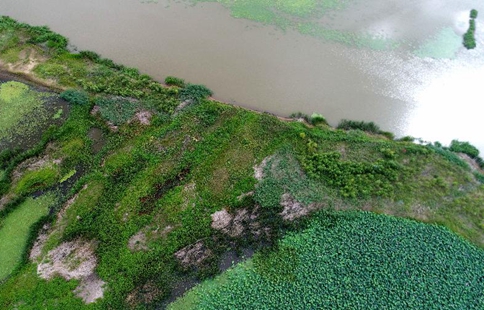SAN FRANCISCO, July 19 (Xinhua) -- Two researchers at Oregon State University have built a framework for autonomous underwater vehicles, or AUVs, to plan energy-efficient trajectories through disturbances that are strong and uncertain, like ocean currents and wind fields.
AUVs such as underwater gliders are valuable research tools limited primarily by their energy budget, meaning every bit of battery power wasted via inefficient trajectories cuts into the time they can spend working. And greater energy efficiency means the AUVs can gather data longer and better.
"Historically, a lot of oceanography data sets and sampling came from using ships, which are expensive and can only really be out for a few days at a time," noted Dylan Jones, a Ph.D. student in OSU's robotics program and lead author on the study published in IEEE Robotics and Automation Letters. "With autonomous underwater vehicles, you can get months-long monitoring. And a way to extend those vehicles' missions is through smarter planning for how they get from one point of interest to another."
Built by Jones and Ph.D. advisor Geoff Hollinger, assistant professor of mechanical engineering in OSU's College of Engineering, the framework involves an algorithm that samples alternate paths, and comparison metrics that let a vehicle decide when it makes sense to switch paths based on new information collected about environmental disturbances.
They tested the framework in a simulated environment, namely a data set of currents from the Regional Ocean Modeling System, and also on a windy lake with an autonomous boat. The results show that the algorithm can plan vehicle paths that are more energy efficient than ones planned by existing methods, that it is robust enough to deal with environments for which not much data is available, and that three of the framework's five path comparison metrics can be used to plan more efficient routes compared to planning based solely on the ocean current forecast.
"These are under-actuated vehicles - they don't go fast in relation to the strong ocean currents, so one way to get them to travel more efficiently is to go with the flow, to coast and not use energy," Jones said, noting that overcoming strong disturbances is a critical component of putting any kind of robot in a real-life environment, and past planning algorithms haven't always considered the dynamics of the vehicle they were planning for.
"We're building more intelligence into these vehicles so they can more reliably accomplish their missions," he was quoted as saying in a news release from OSU in the U.S. Pacific Northwest on Wednesday.
Future research will also deal with "informative path planning," namely gathering information about the environment and disturbances that the algorithm can use later to plan energy-efficient routes. "How do we combine these two ideas - planning a path for energy efficiency while also trying to gather information that will inform efficient path planning?" Jones said. "There will be tradeoffs and it might come down to, do I pay five hours now to save six hours later on?"

















